SLLSEB2E February 2012 – October 2015 TPD1E6B06
PRODUCTION DATA.
- 1 Features
- 2 Applications
- 3 Description
- 4 Revision History
- 5 Pin Configuration and Functions
- 6 Specifications
- 7 Detailed Description
- 8 Application and Implementation
- 9 Power Supply Recommendations
- 10Layout
- 11Device and Documentation Support
- 12Mechanical, Packaging, and Orderable Information
Package Options
Mechanical Data (Package|Pins)
- DPL|2
Thermal pad, mechanical data (Package|Pins)
- DPL|2
Orderable Information
6 Specifications
6.1 Absolute Maximum Ratings
over operating free-air temperature range (unless otherwise noted) (1)(1) Stresses beyond those listed under Absolute Maximum Ratings may cause permanent damage to the device. These are stress ratings only, which do not imply functional operation of the device at these or any other conditions beyond those indicated under Recommended Operating Conditions. Exposure to absolute-maximum-rated conditions for extended periods may affect device reliability.
6.2 ESD Ratings
| VALUE | UNIT | |||
|---|---|---|---|---|
| V(ESD) | Electrostatic discharge | Human body model (HBM), per ANSI/ESDA/JEDEC JS-001(1) | ±2500 | V |
| Charged-device model (CDM), per JEDEC specification JESD22-C101(2) | ±1000 | |||
| IEC 61000-4-2 contact discharge | ±15000 | |||
| IEC 61000-4-2 air-gap discharge | ±15000 | |||
(1) JEDEC document JEP155 states that 500-V HBM allows safe manufacturing with a standard ESD control process. Pins listed as ±2500 V may actually have higher performance.
(2) JEDEC document JEP157 states that 250-V CDM allows safe manufacturing with a standard ESD control process. Pins listed as ±1000 V may actually have higher performance.
6.3 Recommended Operating Conditions
over operating free-air temperature range (unless otherwise noted)| MIN | NOM | MAX | UNIT | ||
|---|---|---|---|---|---|
| Operating free-air temperature, TA | –40 | 125 | °C | ||
| Operating Voltage | Pin 1 to 2 or Pin 2 to 1 | –5 | 5 | V | |
6.4 Thermal Information
| THERMAL METRIC(1) | TPD1E6B06 | UNIT | |
|---|---|---|---|
| DPL (X2SON) | |||
| 2 PINS | |||
| RθJA | Junction-to-ambient thermal resistance | 567.1 | °C/W |
| RθJC(top) | Junction-to-case (top) thermal resistance | 253.2 | °C/W |
| RθJB | Junction-to-board thermal resistance | 31.6 | °C/W |
| ψJT | Junction-to-top characterization parameter | 379.1 | °C/W |
| ψJB | Junction-to-board characterization parameter | 31.6 | °C/W |
(1) For more information about traditional and new thermal metrics, see the Semiconductor and IC Package Thermal Metrics application report, SPRA953.
6.5 Electrical Characteristics
over operating free-air temperature range (unless otherwise noted)| PARAMETER | TEST CONDITIONS | MIN | TYP | MAX | UNIT | |
|---|---|---|---|---|---|---|
| VRWM | Reverse stand-off voltage | ILEAK = 100 nA | ±5 | V | ||
| ILEAK | Leakage current | Pin 1 = 5 V, Pin 2 = 0 V | 100 | nA | ||
| VClamp1,2 | Clamp voltage with ESD strike on pin 1, pin 2 grounded. | IPP = 1 A, tp = 8/20 μs | 10 | V | ||
| IPP = 5 A, tp = 8/20 μs | 14 | |||||
| VClamp2,1 | Clamp voltage with ESD strike on pin 2, pin 1 grounded. | IPP = 1 A, tp = 8/20 μs | 10 | V | ||
| IPP = 5 A, tp = 8/20 μs | 14 | |||||
| RDYN | Dynamic resistance | Pin 1 to Pin 2(1) | 0.55 | Ω | ||
| Pin 2 to Pin 1(1) | 0.55 | |||||
| CIO | I/O capacitance | VIO = 2.5 V; ƒ = 1 MHz | 6 | pF | ||
| VBR1,2 | Breakdown voltage, pin 1 to pin 2 | IIO = 1 mA | 6 | V | ||
| VBR2,1 | Breakdown voltage, pin 2 to pin 1 | IIO = 1 mA | 6 | V | ||
(1) Extraction of RDYN using least squares fit of TLP characteristics between IPP = 10 A and IPP = 20 A.
6.6 Typical Characteristics
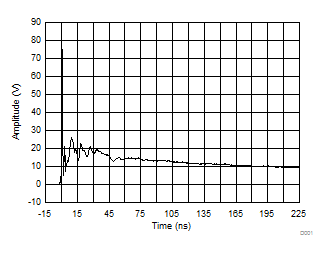 Figure 1. ESD Clamp Voltage +8-kV Contact ESD
Figure 1. ESD Clamp Voltage +8-kV Contact ESD
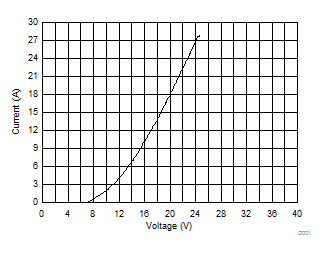 Figure 3. Clamping Voltage VTLP = F(ITLP), PIN1 to PIN2
Figure 3. Clamping Voltage VTLP = F(ITLP), PIN1 to PIN2
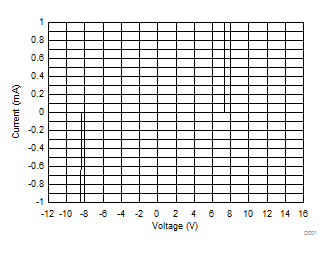 Figure 5. IV Curve
Figure 5. IV Curve
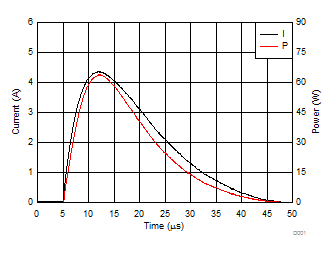
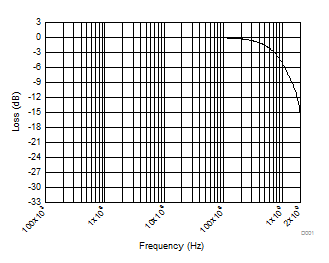 Figure 9. Insertion Loss, Pin 2 to Pin 1
Figure 9. Insertion Loss, Pin 2 to Pin 1
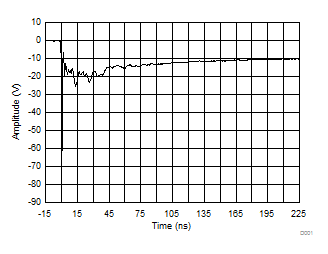 Figure 2. ESD Clamp Voltage –8-kV Contact ESD
Figure 2. ESD Clamp Voltage –8-kV Contact ESD
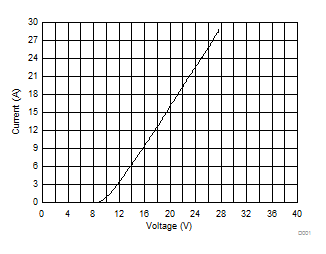 Figure 4. Clamping Voltage VTLP = F(ITLP), PIN2 to PIN1
Figure 4. Clamping Voltage VTLP = F(ITLP), PIN2 to PIN1
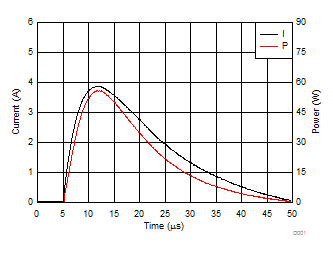 Figure 6. Surge Graph, Pin 1 to Pin 2
Figure 6. Surge Graph, Pin 1 to Pin 2
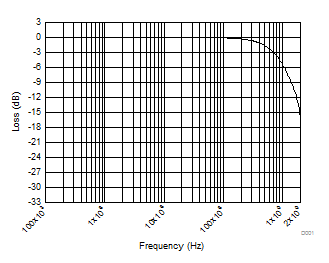 Figure 8. Insertion Loss, Pin 1 to Pin 2
Figure 8. Insertion Loss, Pin 1 to Pin 2